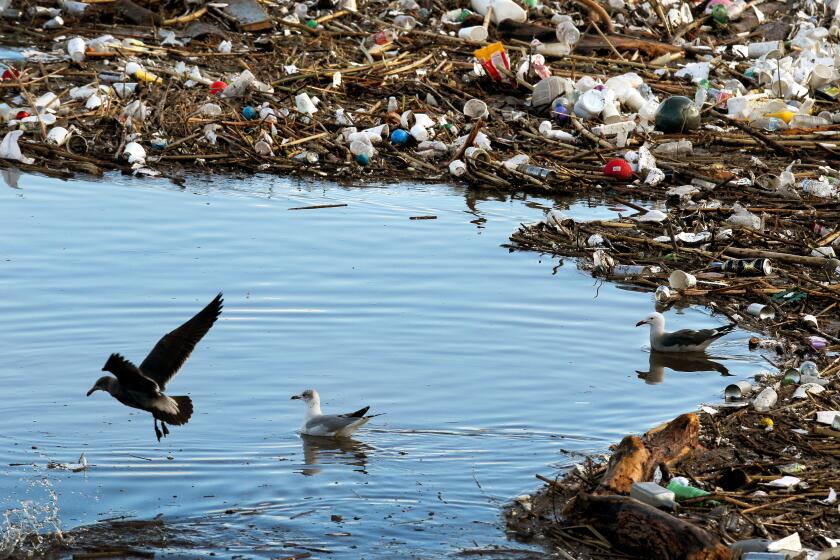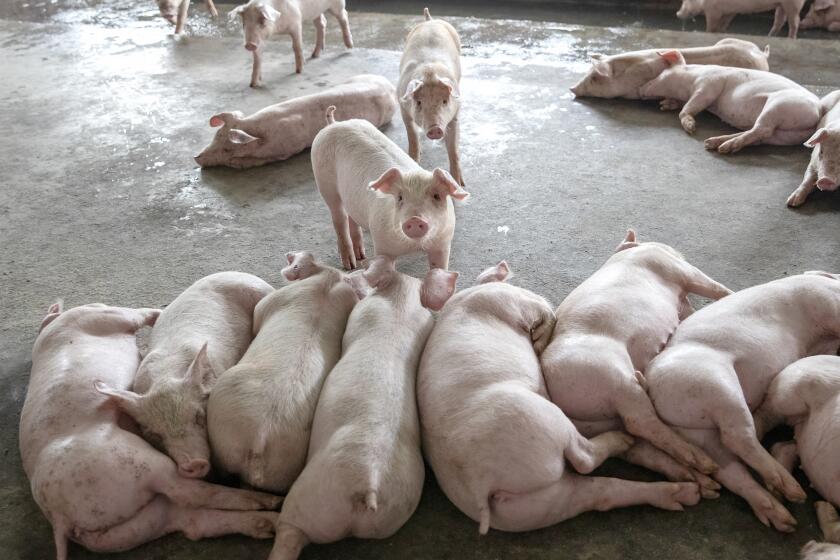
- Share via
- H5N1 bird flu virus has been detected in wastewater collected from a plant in Carson.
- L.A. County public health officials say the risk to the public remains low.
- The source of the virus has not been determined.
Los Angeles County health officials said they have detected H5N1 bird flu virus in wastewater collected from the A.K. Warren Water Resource Facility in Carson.
The viral “hit” was detected on Oct. 28 by WastewaterSCAN, an infectious disease monitoring network run by researchers at Stanford, Emory University and Verily, Alphabet Inc.’s life sciences organization.
Hits were also seen during the last week in San José, Redwood City, San Francisco, Palo Alto, Sacramento, Santa Cruz, Marina and Turlock.
The suit is the latest in a series of high-profile legal actions California officials have taken against petrochemical corporations and plastic manufacturers.
The Carson plant processes wastewater from roughly 50% of L.A. County’s population, said Annabelle de St. Maurice, the L.A. County Department of Public Health’s director of community outbreak and syndromic surveillance.
Officials say they have not identified the source of the virus, but suggested a few possibilities, including discarded contaminated animal products and infected wild bird droppings. They are also “actively engaging key risk groups,” including dairy and meat-processing sites nearby.
“The likely sources more likely appear to be from animal products, rather than wild birds,” De St. Maurice said.
She said the risk to the public remains low.
H5N1 bird flu has been detected in 203 California dairy herds since August; 17 dairy workers have also been infected. Across the nation, 41 people have been infected — 21 from dairy cows, 19 from poultry and one unknown. The USDA has reported 404 positive dairy herds in 14 states. This number does not include eight herds detected earlier this week in Utah.
It’s also been conclusively detected in a pig from Oregon.
De St. Maurice said the county routinely monitors and tests symptomatic birds, pets and wild mammals.
In addition, she said, the county is working within the community to subtype flu specimens collected in health clinics and hospitals specimens “to see if there are potential H5N1 human cases.”
She noted the county’s public health department is also doing “outreach and education to communities that are at risk,” but said that, so far, there have been no human cases.
De St. Maurice said it was this kind of work — subtyping flu specimens — that enabled Missouri health officials to identify an H5N1 human case that had no reported dairy or poultry contact. The source of that person’s infection has still not been determined.
The wastewater findings come as the virus spreads in California’s dairy cows — which now make up more than half the nation’s reported cattle infections — and as fall migration of wild birds from the Arctic moves south along the Pacific Flyway.
There are now two strains of H5N1 bird flu circulating in California. The form circulating in dairy cows is known by scientists as B3.13. A new wild bird version, which has emerged only recently, is known as D1.1 or D1.2.
Genetic sequencing of the H5 virus found in Los Angeles County wastewater has not been conducted. According to De St. Maurice, the way the samples are captured and identified does not allow for sequencing.
H5 viruses are of bird origin; they are not human viruses.
H5N1 bird flu has been discovered in a pig in Oregon, a development that has sparked new concerns among infectious disease experts.
In a statement, officials said people could reduce their risk of infection by avoiding raw milk, raw cheese and undercooked meats. Pasteurization and adequate cooking inactivates the virus.
They also recommend that people avoid unprotected contact with sick or dead animals, and avoid materials contaminated with bird feces. Pets can also be infected in these ways. And officials request that people report sick or dead birds to local animal control agencies.
They also recommend that people get the annual flu shot. Though the seasonal flu vaccination won’t prevent bird flu infection, it reduces the chances for the bird flu to combine with a human flu — potentially creating a new virus that could spread more easily among people.
More to Read
Sign up for Essential California
The most important California stories and recommendations in your inbox every morning.
You may occasionally receive promotional content from the Los Angeles Times.












